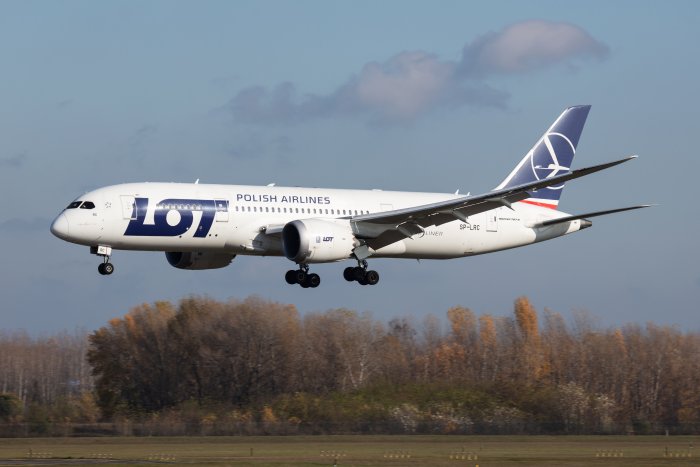Hungarian Chief Engineer Driving Automotive Innovation Forward in Munich

Attila Kőhalmi
Photo courtesy of Dániel Kőhalmi
While German automotive companies bring plenty of jobs and considerable investment into Hungary, some highly trained Hungarian professionals contribute significantly to the latest innovations in the homeland of these companies. The Budapest Business Journal talks with Attila Kőhalmi, working at EDAG Engineering as the chief engineer responsible for BMW’s camera-based driver assistance systems, about his career in the automotive industry in Munich.
BBJ: How did your journey in Munich begin? How did you get into the automotive industry?
Attila Kőhalmi: My journey had already begun as a child. My father was working for Malév Hungarian Airlines, which granted me access to the cockpit. Instead of sitting with my family on board, I was with the pilots in the cockpit. I used to talk a lot with them; the cockpit was my second home. These experiences led me to decide to work with airplanes. Years later, as a teenager, I still held firmly to this dream, so I enrolled in an aeroclub where I learned how to fly a sailplane.
At the end of high school, one has to think about future studies. I went to a German-Hungarian bilingual high school, and I had continued to follow my dreams, so I started to search for universities offering studies in this direction. When I didn’t find my preferred area in Hungary, I continued my investigations abroad. After thorough research, I stumbled upon a promising university in Munich, where I could start my studies in aerospace engineering. My brother lived in Munich at that time, so it was a perfect coincidence. During my studies, I was still flying within a German aeroclub nearby, in the Alps. I was able to make new friends and establish amazing contacts.
At the university, I had to complete an internship for an entire semester. I began to apply to different companies and jobs and received an e-mail via the aeroclub that BMW was looking for an intern. I applied to that and got it. I couldn’t believe that I would work for BMW. On my first day, I visited the Munich plant, where the 3 and 4 series were built. I was allowed to get into brand new cars, assembled only some minutes ago.
During my internship, I received another mail from the same person who told me about the internship vacancy, that there was a possibility to test the driving assistance systems on BMW’s test track in Aschheim. A special BMW prototype driving license was required, which I lacked at the time. Nevertheless, I reached out to the person conducting the test and asked her whether I could observe from the rear seat of the test vehicle.
I was allowed to, and the car was a BMW M760Li with a V12 engine. It was the beginning of my student job after the internship, where I was on the test track with cars I wouldn’t have dreamt about before, like the M850i or the new Toyota Supra, daily.
Today, on behalf of BMW, I am taking care of the camera-based driving assistance system, which enables lane-keeping, traffic sign recognition, traffic light recognition, and so on.
BBJ: What kind of special education and licenses did you need to drive pre-production cars?
AK: You wouldn’t believe how many additional driving licenses you have to complete. For the vehicles I am currently driving, two theoretical and three practical driving licenses are required. First of all, you must always know that you are driving a car that attracts attention. It might be camouflaged, or there may be external measurement equipment installed. You must always follow the rules, as you represent the company and the car of the future.
This is what the first theoretical driving license is about. For the second theoretical driving license, you learn about restricted driving clearance, how to handle and react to critical situations because the software is being developed, and you are the one who is validating it.
One learns during the three practical driving licenses about safe vehicle control under every condition and speed. I have to admit I had a lot of fun while obtaining the licenses. The second practical driving license takes place on the Salzburgring, where one has to drive on the ideal line, make double lane changes at 100 km/h and, of course, be able to drift (practicing oversteering), at least half a donut, but the more, the better.
BBJ: How does your average workday look?
AK: My job is divided into two parts: Problem management and chief engineering. I receive all of the software failure tickets and have to make a pre-analysis, for example, why the traffic sign was not recognized. This is critical because our goal is to make the customers happy, in which they receive a close to perfect working system without bugs. Those issues should be fixed with the following software delivery, so that we won’t have any problems within the serial productions of the cars. The chief engineering part is more about hardware changes and evaluation. I have to attend many meetings with the supplier and clarify how we proceed and further steps.
BBJ: What is your favorite part of your job?
AK: To see the evolution between two successive software stages. Fortunately, BMW has a program called “testing outside working hours” where some partner development engineers can drive the test vehicles for testing purposes also over the weekend. This is a win-win situation because the newest software will be tested under everyday conditions and one is happy to drive one’s dream car. As a product owner, it fascinates me to see the multitude of vehicles on the roads driving around with my component built-in.
BBJ: Currently, what kind of technologies are you testing?
AK: Mainly the functions of the camera-based driver assistance system, lane departure warning, lane-keeping assist, lane change assist, traffic sign recognition, traffic light recognition, adaptive cruise control, urban cruise control, and many others. I am also supporting parking functions, for example, parking maneuvering assistance.
This article was first published in the Budapest Business Journal print issue of October 8, 2021.
SUPPORT THE BUDAPEST BUSINESS JOURNAL
Producing journalism that is worthy of the name is a costly business. For 27 years, the publishers, editors and reporters of the Budapest Business Journal have striven to bring you business news that works, information that you can trust, that is factual, accurate and presented without fear or favor.
Newspaper organizations across the globe have struggled to find a business model that allows them to continue to excel, without compromising their ability to perform. Most recently, some have experimented with the idea of involving their most important stakeholders, their readers.
We would like to offer that same opportunity to our readers. We would like to invite you to help us deliver the quality business journalism you require. Hit our Support the BBJ button and you can choose the how much and how often you send us your contributions.








